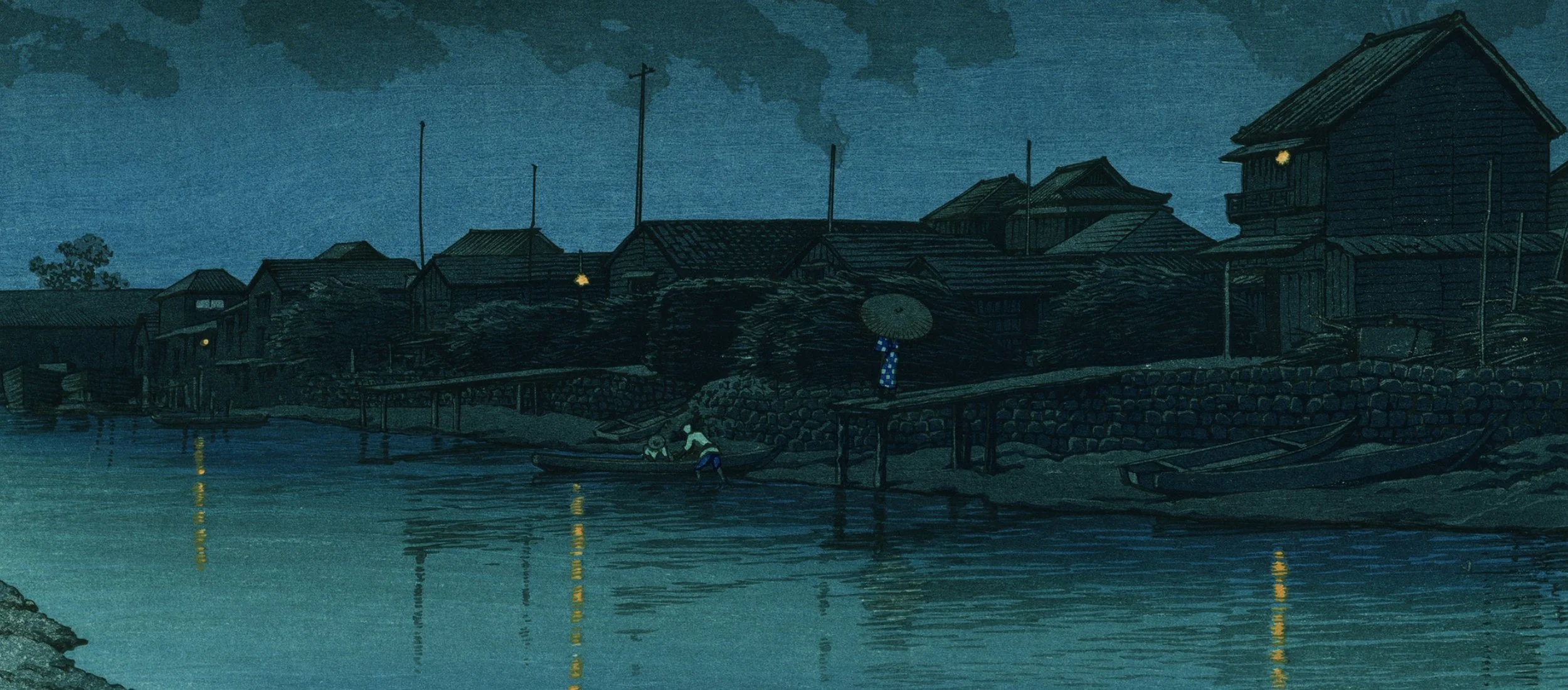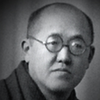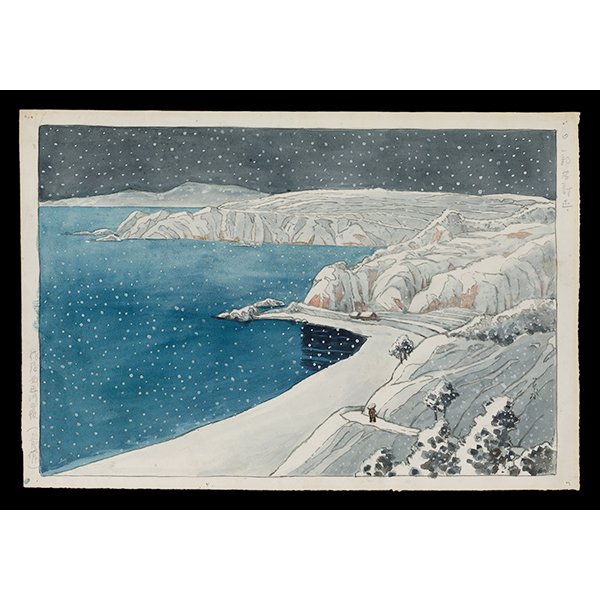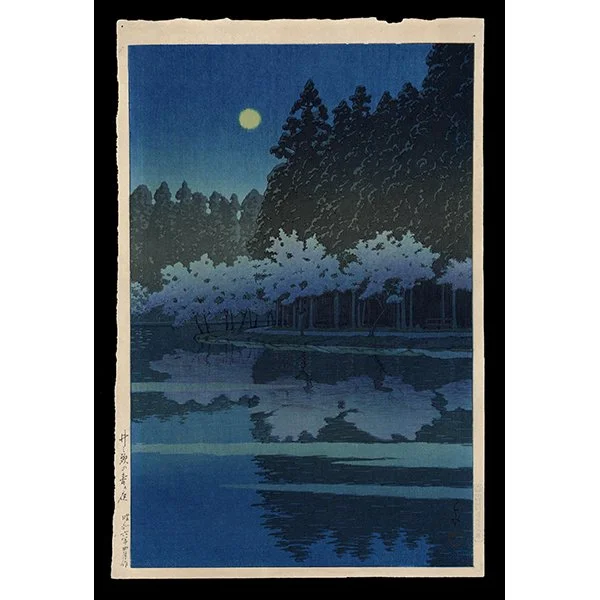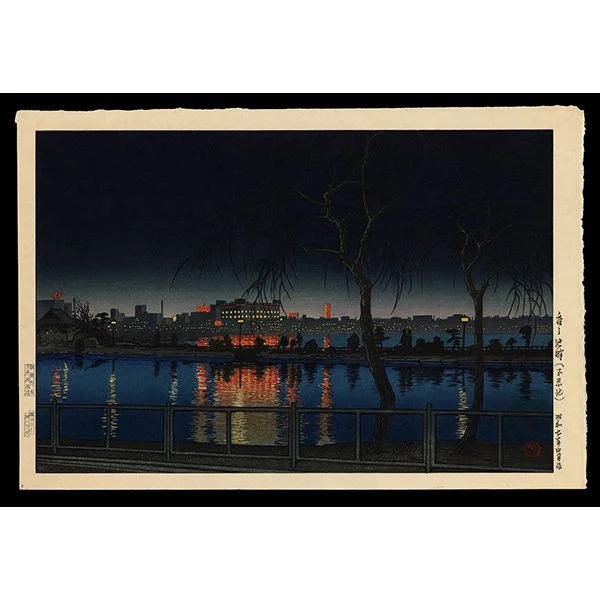HASUI
COLLECTING JAPANESE PRINTS FEATURED SHIN HANGA ARTISTKawase Hasui
1883 - 1957
Profile at a Glance:
Created more than 600 woodblock print designs, almost exclusively landscapes, for a variety of publishers but the vast majority were produced for Watanabe Shozaburo.
In 1953, the Commission for the Protection of Cultural Properties designated Snow at Zojo-ji Temple an Intangible Cultural Asset, and in 1956 Hasui himself was awarded the title of Living National Treasure.
Born in 1883 to a merchant family in Tokyo, Kawase (born Bunjiro) Hasui diverged from his family enterprise and began pursuing a career as a professional artist at the age of twenty-six. After a two-year apprenticeship in Western-style painting under Okada Saburosuke (1869–1939), Kawase became a pupil of nihonga master Kiyokata Kaburagi.
During his studies, he also became a keen admirer of Ito Shinsui (a former student of Kaburagi), in particular his Eight View of Lake Biwa, and sought out affiliation with Shinsui's publisher Watanabe Shozaburo. The two quickly established a rapport that would develop into a lifelong partnership. In addition to his work with Watanabe, Kawase worked with several other publishers, including Kawaguchi (1929), Doi Teikichi (1931), Iida (1932), and Shiota Takezo (1935). Kawase Hasui would go on to produce more than six-hundred prints during his career (four-hundred sixteen of which were landscapes), including series such as Souvenirs of Travel, Eight Views of the Southeast, and Twelve Views of Tokyo.
Like the legendary ukiyo-e artist Utagawa Hiroshige, Kawase was an avid traveler, peregrinating the countryside depicting both tourist attractions and lonely byways. Features are generally solid, textures highly dense, and colors sonorous. Kawase's earlier compositions are varied and individualized (e.g., Snow at Terashima, c. 1920), whereas later works bear a strong resemblance to Hiroshige and feature romanticized, nostalgic views of Japan. In 1953, the Commission for the Protection of Cultural Properties designated Snow at Zo-ji Temple an Intangible Cultural Asset, and in 1956 Kawase himself was awarded the title of Living National Treasure. Alongside his contemporary Ito Shinsui, Kawase Hasui was one of the most talented and prolific artists of the shin hanga movement.


